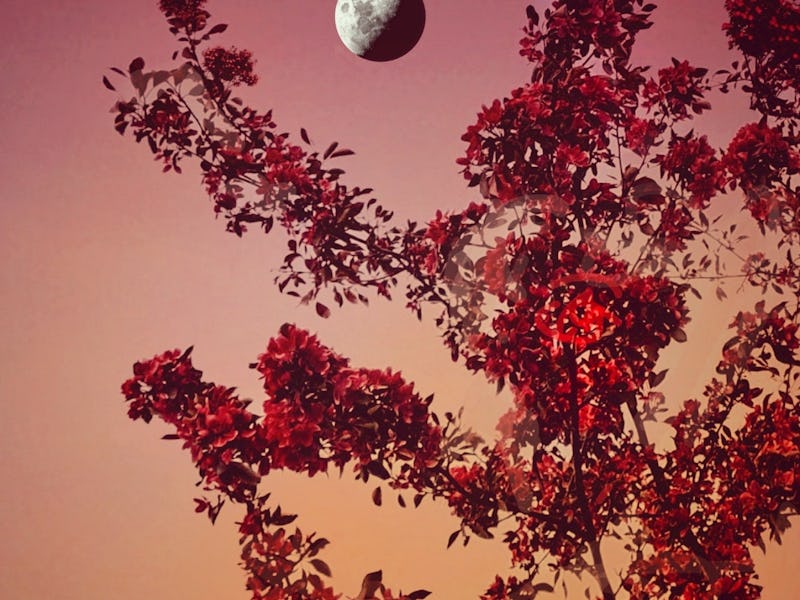You need to watch the longest lunar eclipse of the century this month
November's Full Moon will also be a partial lunar eclipse.

Winter is officially here, along with its chilling Full Moon.
November’s Frosty Moon, or the Beaver Moon, rises along with the last lunar eclipse of the year. Although it’s not a total lunar eclipse, it’s still damn close as nearly 97 percent of the Moon will be covered by Earth’s shadow.
The Frost Moon will appear as a tiny sliver of natural satellite goodness.
What day is the Full Moon in November 2021?
The Full Moon will rise on November 19 at 5 p.m. Eastern and reaches peak illumination at 3:58 a.m. Eastern. Peak illumination is when the Full Moon shines at its brightest when the whole visible lunar face is illuminated by the light from the Sun.
But you can still observe its near fullness the previous night, just after sunset. A partial lunar eclipse will accompany this month’s Full Moon. The partial lunar eclipse will peak at 4:02 a.m. Eastern on November 19. According to NASA, this will be the longest eclipse of the century, with a duration of three hours and 28 minutes.
The visibility of the lunar eclipse, with darker regions indicating best visibility.
What is a partial lunar eclipse?
A total lunar eclipse occurs when the Earth is wedged between the Sun and the Moon, obscuring the Sun’s light from Earth’s orbiting satellite and drenching it in darkness.
A lunar eclipse can only occur during a Full Moon, but they are much less frequent than solar eclipses. There is typically an average of two to four lunar eclipses within one year.
During a total lunar eclipse, the Sun, Earth, and the Moon align in a straight line for a brief moment. During a partial lunar eclipse, the Sun, Earth, and Moon don’t form an exact straight line.
Instead, their alignment is a little off, resulting in the Earth only partially covering the whole face of the Moon. Although we won’t be seeing a total lunar eclipse until the year 2022, this one comes pretty close as about 97 percent of the surface of the Moon will be covered in Earth’s shadow.
What is a Beaver/Frosty Moon?
A Full Moon shines at its brightest as it positions itself on the opposite side of the Sun from our Earthly view. The Full Moon of each month has a unique name that dates back to Native American tradition. In November, the Full Moon is known as the Beaver Moon or the Frost Moon. It’s called the Beaver Moon because it falls around the same time when hunters would set traps for beavers, capturing them for their fur ahead of the chilly winter season.
November’s Full Moon is also known as the Frosty Moon because it falls near the beginning of the winter season when the temperatures start to drop.
When is the next Full Moon?
The next Full Moon will fall on December 18, peaking at 11:35 p.m. Eastern. The Moon will rise on that date at 4:02 p.m. and set at 6:51 a.m. The year’s final Full Moon is known as a Cold Moon, Oak Moon, Moon before Yule, and Long Night Moon.
After that comes the January 2022 Full Moon, known as the Wolf Moon, reaching zenith at 6:48 p.m. Eastern. For a complete list of 2022 Full Moons, read our guide.
How is a partial lunar eclipse different than a blood moon?
A total lunar eclipse is also known as the Blood Moon as the orbiting satellite turns a mean, bloody red color. This happens as the light coming from the Sun gets refracted by Earth’s atmosphere towards the surface of the Moon, giving it a reddish hue.
A partial lunar eclipse may also sometimes result in the same effect depending on how much of the Moon’s face is covered by Earth’s shadow. The Moon passed through two regions of Earth’s shadow, an outer penumbra, and an inner umbra.
Direct sunlight is fully dimmed in the outer penumbra, while indirect, dimmer sunlight is refracted by Earth’s atmosphere in the inner umbra.
November’s Full Moon pays homage to the cold winter nights.
How to see November 2021 lunar eclipse
The lunar eclipse will be visible in North and South America, Australia, and some parts of Europe and Asia. From some areas, the eclipse will be visible for its total duration, while the Moon will rise or set during the eclipse in other regions.
You can spot the lunar eclipse in the night sky as it appears as though the shadow of Earth is hovering over the Moon, leaving a tiny sliver peaking out to the side.
When is the next lunar eclipse?
A total lunar eclipse will take place on May 16, 2022. Next year will only see two lunar eclipses, with the second one on November 8, 2022.
These lunar eclipses will become less frequent as the Moon slowly moves away from the Earth by about 1.6 inches each year. But it will take a while for Earth’s shadow to not cover the surface of the Moon, so we still have billions of years of lunar eclipses to watch out for.